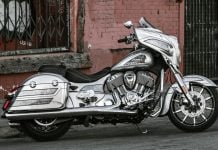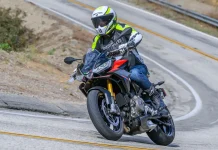Motorcycle Deaths Per Year

With much attribution to lack of helmets, and riding while under the influence of alcohol or drugs, the Governors Highway Safety Association (GHSA) reports that more than 5,000 motorcyclists were killed in 2015, which represents an estimated 10 percent increase over 2014.
This preliminary crash data – based at an early look at current data, trends, and developing issues – reports that this is more than 450 motorcycle fatalities over 2014. GHSA says it projects the final motorcyclist fatality total for 2015 will be 5,010 – only the third year in U.S. history, and the first time since 2008, in which the fatality number topped 5,000. Also, this report follows two years of decreasing motorcycle fatalities.
Visit Top 5 Motorcycle Safety Tips
The report takes data from all 50 states and the District of Columbia, and compared to 2014, motorcycle deaths by state increased in 31 states, decreased in 16, and remained the same in three others along with the District of Columbia. The GHSA report was created by Richard Retting and Heather Rothenberg of Sam Schwartz Consulting.
“These sobering findings provide a stark reminder of how susceptible motorcyclists are to fatal and life-threatening injuries,” Retting says. “The risk of motorcycle crashes and fatalities is compounded by factors such as alcohol and drug use, increased speed limits, the repeal of state helmet laws, and a record number of vehicles on U.S. roads. Concerted efforts are needed to reduce this tragic loss of life.”
The GHSA claims the way to reverse these growing statistics is to increase motorcycle safety by restoring the helmet law in the 32 states that don’t have a law. The GHSA further says that some states with helmet laws don’t require DOT standards, which, if employed, could further reduce the risk of fatal motorcycle crashes.
The GHSA reports that, currently, only 19 states and D.C. require all riders be helmeted. Another 28 mandate helmet use by riders younger than age 18 or 21, and three have no requirements. According to a 2014 National Highway Traffic Safety Administration (NHTSA) study, the use rate of helmets in universal law states was 89 percent, compared with 48 percent in all other states.
GHSA Executive Director Jonathan Adkins notes that “state and national data illustrate that motorcyclists are far more likely to be injured or killed in a crash than motor vehicle occupants. GHSA and its members will continue to support the development, implementation, and evaluation of evidence-based motorcycle safety countermeasures to improve rider safety and, ultimately, save lives.”
The GHSA provides the following advice for motorcyclists to reduce fatal crashes:
- Always wear a DOT-compliant helmet, even when not required by state law
- Wear bright-colored clothing to make it easier to be seen by other drivers
- Never ride impaired by alcohol or other drugs
- Obey posted speed limits
- When purchasing a new motorcycle, opt for a model with antilock brakes, which have been shown to decrease fatal motorcycle crashes by preventing a motorcycle’s wheels from locking during braking and assisting with maintaining the stability of the motorcycle
- Drivers of other motor vehicles should always be aware and looking out for motorcyclists around them and, of course, obey all traffic laws – including not texting and driving
All 2015 data in the report are preliminary. State-by-state data and image files are available from GHSA.






Sad, sobering news. The federal regulators could encourage voluntary helmet use by revising FMVSS 218, the DOT helmet standards to allow deemed compliant status to ECE 22.05 compliant helmets, which would allow much greater selection options to consumers (see: https://ultimatemotorcycling.com/motorcycle-helmet-standards-explained-dot-ece-22-05-snell/ ). Also, the insurance industry could encourage use of helmets and other protective gear such as impact-protective jackets, riding pants boots and gloves by providing insurance premium reduction incentives for those who ride with all the gear. Of course, the most effective crash prevention system is a sober, aware and careful rider, but even with all that, accidents can happen and no gear can prevent injuries or death in a given situation. Still, riding with the best gear possible makes just as much sense as having your vehicle in top shape with good tires, brakes and so on. Ride safe and keep riding.
Wise words sir, thank you. Riding motorcycles is simply about risk management, and that’s reflected in every decision we make, whether it’s where we ride, how we ride, or the gear we wear when we ride.
Riding is an engaged activity, unlike what many people think driving is. If you don’t focus on the road/traffic, let your brain wander away from the controls, and let your ego take over you’re in for a world of hurt. However, if you dig in and learn how to think like a motorcyclist — not just ride like one — things usually go your way.
So true! I’ve often thought that if ALL potential drivers were made to ride a motorcycle for a year first, there’s be whole lot better driving standard out there. Haha but it’ll never happen.